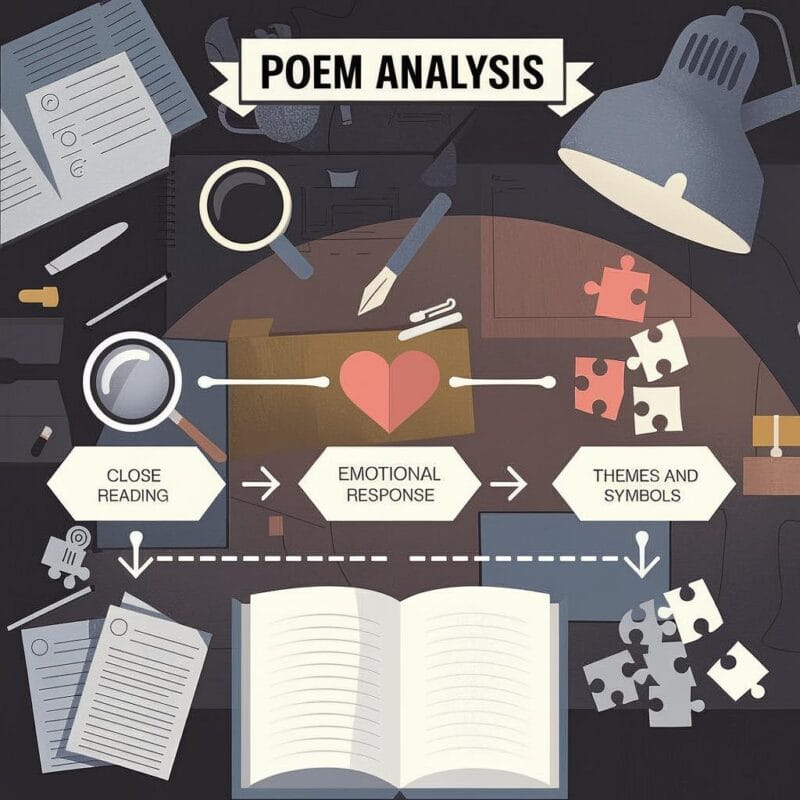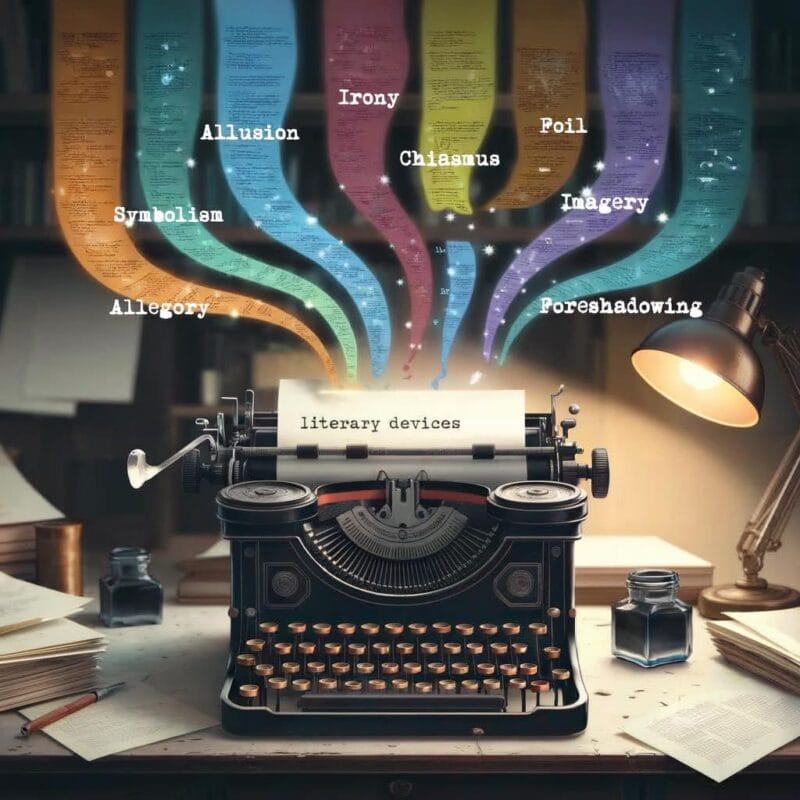- To read a difficult book, develop a reading schedule and annotate as you go to track complex ideas.
- Understand the context of the book and don’t hesitate to skim tough sections.
- Joining a book club or forum can provide support and motivation.
- Difficult books often have dense prose and intricate plots, requiring active engagement and different reading techniques for various genres.
- Overcoming psychological barriers like intimidation and maintaining motivation are key.
- Digital resources, such as summaries and discussion forums, can enhance comprehension and provide different perspectives.
Reading books like Ulysses (1922) by James Joyce or Infinite Jest (2006) by David Foster Wallace can seem daunting, but it’s a journey well worth taking. Learning how to read a difficult book requires not just patience but also specific strategies to comprehend its complex themes and intricate structures.
To face the challenges of reading a difficult book, develop a disciplined reading schedule and commit to reading a certain number of pages or chapters each day. Annotating as you read can help keep track of complex plots or ideas and make it easier to revisit key passages later. Another useful strategy is to join a book club or online forum that focuses on difficult texts. Engaging in discussions with others can provide new perspectives and keep motivation levels high.
When facing the challenges, start by understanding the context and time period of the book; this can provide invaluable insights into its themes and style. If you encounter particularly tough sections, don’t hesitate to skim or even temporarily skip ahead. To stay motivated, view the challenging sections as opportunities for growth rather than obstacles. The goal is to keep moving forward and enjoy the reading experience.
Identifying Common Characteristics in Challenging Reads
Difficult books often feature dense prose, intricate plots, and extensive use of symbolism. Works by Shakespeare or James Joyce typically contain language that may feel archaic or unfamiliar.
Also, themes in challenging books tend to be layered and multifaceted, requiring the reader to interpret and analyze rather than simply consume. Specific literary genres, such as modernist literature, are known for their nonlinear timelines and multiple perspectives, making them difficult to follow without active engagement.
Authors of these texts often employ complex narrative techniques, such as stream of consciousness, which can be disorienting. Understanding these common characteristics helps readers prepare mentally and set realistic expectations.
Psychological Barriers to Reading Complex Literature
Approaching hard-to-read books involves tackling more than just their textual complexities. Readers often face psychological barriers, such as intimidation by the book’s reputation or fear of not understanding the content. This can create resistance to starting the book in the first place or continuing it once started.
Motivation is a crucial factor. Maintaining interest in themes that initially seem unengaging requires a proactive mindset. Techniques such as setting small, achievable reading goals or discussing the book in a group can help to manage these barriers.
Past experiences with similar challenging books can either positively or negatively influence motivation. A beneficial strategy is to approach these works with curiosity and a willingness to learn, rather than a fear of failure. This mindset shift can transform the reading process into a rewarding intellectual journey.
Incorporating Difficult Books for Self-Development
Mastering how to read a difficult book can greatly enhance personal growth by pushing one out of their comfort zone, encouraging exploration of new genres, and challenging authors.
Stepping Out of Your Comfort Zone
Tackling difficult books requires one to step out of their comfort zone. Select texts that present a significant intellectual challenge. Begin by researching the author and their work, which can provide insights into the book’s context and themes.
Developing a reading strategy is critical. Start by skimming the introduction and any preface material. Take notes and highlight key points. Reading slowly and consistently, even if it means only a few pages per day, can make the material more digestible. If certain sections are too challenging, skim them to maintain momentum.
Exploring New Genres and Challenging Authors
Venturing into genres and authors that are unfamiliar can stimulate self-development. Books on philosophy, for example, often require background knowledge. Reading about the author’s theories and their critical reception can provide useful context. Utilize commentary and summaries, like Spark Notes, to supplement your reading.
Engage with complementary pieces of work that can help you better appreciate the primary text. Discussing the book with others or joining a reading group can provide different perspectives and enhance your understanding. Sentiments gleaned from these discussions can also help to make complex concepts more tangible and applicable to daily life.
By exploring these new avenues, one develops not only a deeper appreciation for literature but also sharpens critical thinking skills.
Literature Genres and Reading Techniques
Reading challenging books requires adapting techniques based on the genres they belong to. Different genres present unique complexities, from thematic depth to complex narratives, demanding targeted strategies for efficient comprehension and retention.
Navigating Various Literary Genres
Different literary genres pose specific challenges. For example, reading a dense modernist text like Joyce’s Ulysses requires interpreting stream-of-consciousness writing and symbolic layers. Meanwhile, to fully grasp the narrative, a historical novel necessitates understanding the historical context.
To manage these unique demands, it’s beneficial to familiarize oneself with genre conventions. Understanding the characteristics of literary periods, such as Romanticism or Postmodernism, can provide clues on how to read particular texts effectively.
Adjusting Reading Methods for Different Genres
When diving into a work like Infinite Jest, readers might benefit from a slower, more analytical reading pace. This helps in deciphering complex plot structures and intricate character interrelationships.
For genres like science fiction or fantasy, creating glossaries for unfamiliar terminology can be helpful. Breaking the text into manageable chunks can also aid in maintaining focus and comprehension. Additionally, readers may find it useful to revisit and reread challenging sections to deepen their appreciation of the book and stimulate better comprehension.
Annotating Texts: Underline and Note-Taking Techniques
Interacting directly with the text through annotation also aids in better comprehension. While reading long or difficult books, keeping a pencil and notebook handy can be invaluable. Underlining key phrases, noting character names, and summarizing paragraphs in the margins are effective strategies.

Highlighting thematic elements and literary devices also aids retention. For example, noting recurring motifs in Ulysses or the use of footnotes in Infinite Jest enhances literacy and understanding of thematic styles. These techniques make the text more interactive and easier to navigate upon review.
The Role of Summaries and Analyses
Using summaries and analyses to comprehend complex texts is another effective strategy. After completing a challenging book chapter, reading a summary can reaffirm one’s comprehension. Websites and study guides often provide concise analyses that highlight important themes and plot points. Framing summaries in one’s own words can also reinforce memory retention.
Furthermore, reviewing analytical essays on difficult works offers various perspectives and insights that could potentially enrich the reader’s interpretation. This practice allows readers to grasp the broader implications of the text while gaining a deeper appreciation for its intricacies.
Specific Authors and Genres of Challenging Works
James Joyce and Modernism
James Joyce’s Ulysses epitomizes the complexity of modernist literature. Understanding the historical and cultural context is critical to understanding modernist literature. Joyce’s Dublin setting and his stream-of-consciousness technique can be perplexing without some background research.
Strategies:
- Pre-reading: Research the author’s life, Dublin’s history, and the Easter Rising.
- Annotations: Take notes and highlight important themes.
- Slow Pace: Allow extra time to absorb the dense prose and intricate narrative.
These preparatory steps ensure a better grasp of Joyce’s multifaceted text.
Gabriel García Márquez and Magical Realism
Magical realism, exemplified by Gabriel García Márquez’s One Hundred Years of Solitude (1967), blends the fantastical with the mundane. This genre often reflects cultural and political contexts, especially Latin American history.
Strategies:
- Contextual Research: Study Colombian history and García Márquez’s influences.
- Accept the Unreal: Treat the fantastical elements as integral to the narrative.
- Character Maps: Track the extensive Buendía family tree to keep characters straight.
Engaging with these tactics makes navigating the magical realism genre manageable.
David Foster Wallace and Postmodernism
David Foster Wallace’s Infinite Jest is a milestone of postmodern literature. Known for its nonlinear narrative and footnotes, the text can be daunting without proper strategies.
Strategies:
- Structured Reading: Follow detailed reading guides.
- Footnote Navigation: Pay attention to footnotes, as they are often critical.
- Discussion Forums: Join online communities to gain different perspectives and insights.
How to Read a Difficult Book Using Digital Resources
When tackling challenging literary works like the examples mentioned above, digital resources can provide valuable assistance. These tools offer summaries and discussions, as well as insights from social media, which can help break down complex texts and enhance comprehension.
Online Summaries and Discussions
Online summaries are invaluable for readers grappling with intricate plots and dense language. Websites such as SparkNotes and CliffNotes condense complicated texts into manageable sections, offering chapter summaries and character analyses. This technique aids in grasping the broader narrative structure.
Discussion forums, like those found on Reddit or book-specific communities, provide a space for readers to ask questions and share insights. Engaging in these discussions can help to clarify confusing passages and introduce different interpretations, deepening appreciation and understanding of the works.
Literary Insights from Social Media
Lastly, social media platforms like Twitter and Instagram offer brief but insightful commentary on how to read a difficult book. Accounts dedicated to literature often share key quotes, thematic analyses, and visual summaries that can make complex texts more accessible.
Engaging in discussions on platforms like Reddit and other book-specific communities, as well as following literature-related accounts on other social media channels, can enhance readers’ appreciation of difficult books by offering clarifications, interpretations, and visual summaries.
Joining book-focused groups on Facebook or following hashtags on Twitter can connect readers with experts and enthusiasts. These interactions can provide diverse perspectives and foster a more nuanced approach to understanding the material.
Learning how to read a difficult book is a rewarding journey that requires patience, focus, and an open mind. By approaching complex texts with curiosity and persistence, breaking them down into manageable sections, and using outside resources, readers can navigate and appreciate the depth of challenging literature.
Every difficult book offers a chance to expand intellectual horizons, deepen critical thinking, and enrich the overall reading experience. Whether it’s a philosophical treatise, a dense novel, or an intricate poem, understanding how to read a difficult book is about embracing the process and allowing understanding to unfold gradually.
Further Reading
Introducing Difficult Books, A Descriptive List by Emily Colette Wilkinson, The Millions
Reading Hard Books is Good, Actually by Danika Ellis, Book Riot
Tough tomes: are challenging books worth the effort? by Alastair Harper, The Guardian





